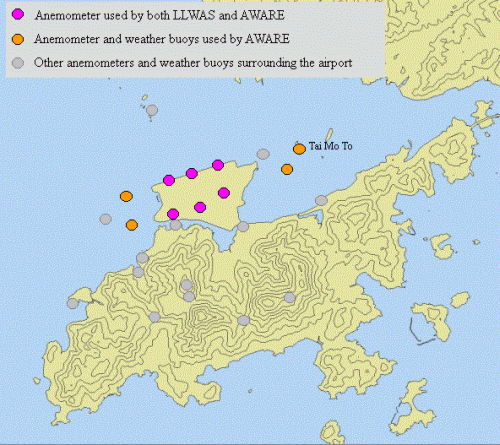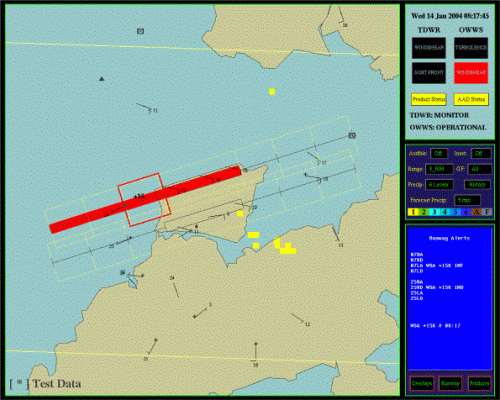AWARE – A new windshear detection algorithm
|
Until recently, the Observatory's automatic windshear detection algorithms made use of wind data from six anemometers along the runways in computing the shear. The algorithm concerned, known as the Low-Level Wind Shear Alert System (LLWAS), served to supplement the Terminal Doppler Weather Radar in detecting windshear in fine weather, especially events caused by sea-breezes. Over the past couple of years, the Observatory implemented a number of weather buoys over the waters surrounding the airport to extend the coverage of the anemometer network (Figure 1). Case studies show that these weather buoys are able to provide earlier indications of windshear caused by sea breezes compared with LLWAS. Subsequently, the Observatory has developed a new windshear detection algorithm known as the Anemometer-based Windshear Alerting Rules – Enhanced (AWARE). It makes use of the extended anemometer network to compute the shear. Small-scale fluctuations due to gusty winds, aircraft wake turbulence and jet blasts are filtered to lower the chance of nuisance alerts. Through case studies, this new algorithm proves to have superior performance over LLWAS. For instance, in the sea breeze episode in the afternoon of 14 January 2004 which brought windshear to the western approach corridor of the northern runway, AWARE successfully provided +15 knot windshear alerts (Figure 2) whereas LLWAS was unable to do so. The shear magnitude computed by AWARE also agreed well with aircraft reports. In view of its demonstrated performance, AWARE has started operations and replaced LLWAS commencing 10 May 2004. |
Figure 1 Anemometers and weather buoys used by LLWAS and AWARE
Figure 2 Windshear alert generated by AWARE at 08:17 UTC on 14 January 2004 for a sea breeze event |

